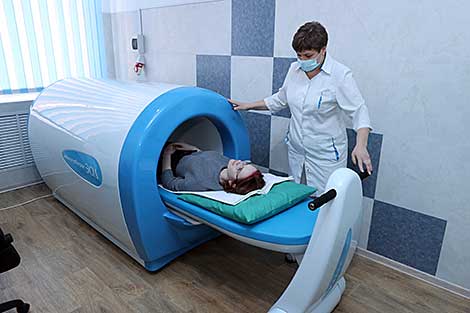Business news
Belarus spends $19.3bn on Chernobyl programs since 1990

An archive photo
MINSK, 20 April (BelTA) - Sergei Shparlo, Head of the Department for Mitigation of the Aftermath of Chernobyl Accident at the Emergencies Ministry of Belarus, gave a detailed account on the progress made in the implementation of the Chernobyl programs and events planned for 2021-2025 to restore the contaminated regions of the country speaking at a meeting of BelTA’s Expert Community project held on 20 April to discuss “Chernobyl – a land where people can live. Belarusian experience of revival and development of polluted territories”.
Since 1990, Belarus has implemented five state programs to mitigate the consequences of the Chernobyl nuclear power plant accident. The sixth program which is underway now will span the years of 2021-2025. The main objectives of these programs are social protection of the affected population, unconditional compliance with radiation safety requirements, accelerated social and economic development and regeneration of the territories contaminated with radionuclides. Since 1990, Belarus has spent $19.3 billion on program activities. These funds were used for people resettlement, village burial, social and economic development of the affected regions, production of clean products and many others.
According to the head of the department, the total financing of the program slated for 2021-2025 is Br2.991 million. This program envisages five tasks. “The first one is to provide social protection, medical care, sanatorium treatment and rehabilitation of the affected population. The second task is to ensure radiation protection and targeted application of protective measures in agriculture. The third one is aimed at social and economic development of the regions. The fourth task focuses on the improvement of sanatorium treatment and rehabilitation of children residing or studying in the radioactively contaminated areas. The fifth task is about scientific research and awareness-building efforts. The intermediate goals have been achieved, the rest is under implementation,” Sergei Shparlo explained.
Some Br538.7 million was spent on these activities in 2021. Benefits and compensation payments for victims of the accident amounted to Br163.9 million. A total of 724 houses and apartments were connected to the gas supply system. Some 34km of gas pipelines and 17.6km of water supply networks were installed. Three deferrization stations and two artesian wells were put into operation. As many as 111 apartments and houses were commissioned. Construction, reconstruction, and overhaul projects were run in 17 healthcare and three education facilities.
As for agriculture, the program activities included the construction of four dairy farms, four grain drying complexes and one breeding pig complex in Dobrush District. Elsewhere, the list of purchases featured seven school buses, 160 items of technological equipment for canteens of educational institutions, 62 items of medical equipment, 560 items of agricultural machinery, and seven utilities vehicles.
A dormitory for 166 beds was built at the Zhemchuzhina Children's Rehabilitation and Recreation Center and a sports and recreation center with a swimming pool was commissioned at the Nadezhda Children's Rehabilitation and Recreation Center. Some 27 items of modern medical equipment were purchased for children's rehabilitation centers. A total of Br115.4 million was spent on the restoration, social and economic development of the affected regions.
“And a few words about children's health improvement. Underage children living in the area of radioactive contamination are entitled to sanatorium treatment and free meals at school. Children are treated in 12 children's rehabilitation and health-improvement centers, which receive organized groups throughout the year. These centers are equipped with modern medical equipment. In 2021, more than 84,000 people, including over 75,000 children, received treatment in such centers,” said Sergei Shparlo.







 print version
print version make home page
make home page add to bookmarks
add to bookmarks

